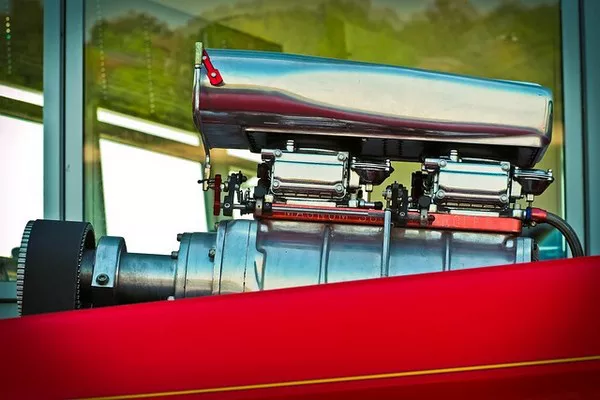Air conditioning (AC) systems are integral to modern comfort, whether in residential, commercial, or automotive settings. Central to the functioning of an AC system is the compressor, a component that circulates refrigerant through the system, enabling the cooling process. Charging an AC compressor is a critical maintenance task that ensures the system operates efficiently. This article provides a comprehensive guide on how to charge an AC compressor, emphasizing safety, correct procedures, and best practices.
Understanding the AC Compressor
Before delving into the charging process, it is essential to understand the role of the AC compressor. The compressor acts as a pump, pressurizing the refrigerant and propelling it through the AC system. This process allows the refrigerant to absorb and dissipate heat, thereby cooling the air. A properly charged compressor is vital for optimal performance, energy efficiency, and longevity of the AC system.
Signs That Your AC Compressor Needs Charging
Several signs indicate that an AC compressor may need recharging:
Insufficient Cooling: If the air from the AC vents is not as cold as expected, it may indicate low refrigerant levels.
Longer Cooling Cycles: The AC system takes longer to cool the space, indicating inefficiency.
Hissing or Bubbling Noises: These sounds can suggest a refrigerant leak.
Ice Formation: Ice on the evaporator coils or refrigerant lines can signal low refrigerant levels.
Higher Energy Bills: A system that works harder due to low refrigerant levels will consume more electricity.
Preparing for the Charging Process
Safety First
Working with AC compressors and refrigerants requires adherence to safety protocols:
- Personal Protective Equipment (PPE): Wear safety goggles, gloves, and long sleeves to protect against refrigerant exposure.
- Ventilation: Ensure the workspace is well-ventilated to avoid the buildup of refrigerant gases.
- Proper Tools: Use appropriate tools, including a manifold gauge set, refrigerant, and vacuum pump.
Tools and Materials Required
- Manifold Gauge Set: For measuring pressure levels in the AC system.
- Refrigerant: Ensure it is the correct type for your specific AC system (e.g., R-134a, R-410a).
- Vacuum Pump: To remove air and moisture from the system before charging.
- Refrigerant Scale: For accurate measurement of refrigerant quantity.
- Leak Detector: To identify any refrigerant leaks in the system.
- Service Manual: Specific to the AC system being serviced, providing critical information and specifications.
Step-by-Step Guide to Charging an AC Compressor
1. Diagnose the System
Before charging the AC compressor, diagnose the system to confirm low refrigerant levels:
- Connect Manifold Gauges: Attach the manifold gauge set to the service ports of the AC system. The low-pressure hose connects to the suction line, and the high-pressure hose connects to the discharge line.
- Read Pressure Levels: Compare the pressure readings to the manufacturer’s specifications. Low readings on both sides typically indicate low refrigerant.
2. Check for Leaks
Before adding refrigerant, it is crucial to check for and repair any leaks:
- Use a Leak Detector: Run the leak detector along the refrigerant lines and connections.
- Visual Inspection: Look for oil stains, which can indicate leaks.
- Repair Leaks: If a leak is found, repair it before proceeding. Common repairs include tightening connections, replacing O-rings, or patching small holes.
3. Evacuate the System
Evacuating the system removes any air and moisture, which can negatively affect performance:
- Connect the Vacuum Pump: Attach the vacuum pump to the center port of the manifold gauge set.
- Evacuate for at Least 30 Minutes: Turn on the vacuum pump and let it run for at least 30 minutes, ensuring the system reaches the recommended vacuum level (typically 500 microns or lower).
4. Charging the System
Once the system is evacuated, it is ready to be charged with refrigerant:
- Weigh the Refrigerant: Place the refrigerant canister on a refrigerant scale to monitor the amount being added.
- Open Low-Pressure Side Valve: Open the low-pressure side valve on the manifold gauge set to allow refrigerant to enter the system.
- Monitor the Process: Continuously monitor the pressure gauges and refrigerant scale to avoid overcharging. The system should be charged according to the manufacturer’s specified amount.
5. Verify and Test
After charging, it is essential to verify the system’s performance:
- Check Pressure Levels: Ensure the pressure levels are within the specified range.
- Test for Leaks Again: Perform another leak test to confirm there are no new leaks.
- System Performance: Run the AC system and check for proper cooling performance.
Common Mistakes to Avoid
- Overcharging: Adding too much refrigerant can lead to high pressure, damaging the compressor and other components.
- Undercharging: Insufficient refrigerant will result in poor cooling performance and can damage the compressor.
- Ignoring Leaks: Failing to repair leaks will lead to continuous refrigerant loss and potential system damage.
- Using Incorrect Refrigerant: Always use the refrigerant specified by the manufacturer to avoid compatibility issues and potential damage.
Best Practices for AC Compressor Maintenance
- Regular Inspections: Periodically check the AC system for leaks, proper operation, and refrigerant levels.
- Professional Servicing: For complex issues or major repairs, consult a professional HVAC technician.
- Proper Storage: Store refrigerant canisters in a cool, dry place to prevent degradation.
- Environmental Considerations: Dispose of old refrigerants and components according to local regulations to minimize environmental impact.
See Also What Is The Purpose Of Compressor?
Conclusion
Charging an AC compressor is a critical maintenance task that requires careful attention to detail and adherence to safety protocols. By following this comprehensive guide, you can ensure your AC system operates efficiently, providing reliable cooling performance. Regular maintenance and proper charging not only enhance comfort but also extend the lifespan of your AC system, ultimately saving time and money. Remember, when in doubt, always consult a professional HVAC technician to handle complex tasks and ensure optimal results.

